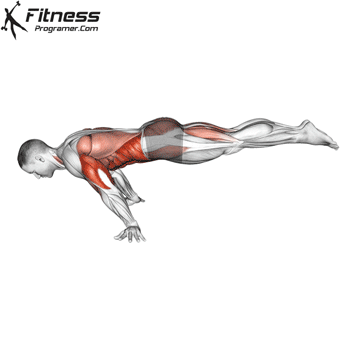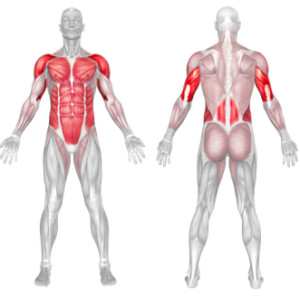Overview
The Full Planche Push-Up is an elite bodyweight strength movement where the individual performs push-ups while holding their entire body parallel to the ground, supported only by the hands. This skill combines static and dynamic strength and is often seen in advanced gymnastic and calisthenic training. The movement involves maintaining complete balance while pushing through a full range of motion without any external support from the legs or feet.
How to Perform the Full Planche Push-Up

To execute the Full Planche Push-Up, follow these steps with precision:
Begin in a Full Planche Hold: Start with your body parallel to the ground, arms straight, shoulders protracted, and feet off the floor. Keep your entire body rigid.
Lower Under Control: Slowly bend your elbows to lower your chest closer to the ground, maintaining the straight-body position. Do not let your hips drop.
Keep Elbows Close: As you descend, ensure your elbows remain tucked in toward your torso. This protects your joints and keeps the movement efficient.
Press Back Up: Once your chest nears the floor, push through your palms and straighten your elbows to return to the full planche position.
Maintain Full Body Tension: Throughout the movement, keep your glutes, abs, and quads tight to maintain a straight, horizontal line.
Tips for Proper Form
Protract your shoulders: Actively push your shoulders forward to stabilize the scapulae and protect the shoulder joint.
Keep the core tight: Engage your abs and lower back to prevent your hips from dropping during the push-up.
Look slightly ahead: Gaze forward to maintain neck alignment and balance.
Control the tempo: Perform the movement slowly and with control to avoid momentum compensations.
Warm up thoroughly: Ensure your wrists, shoulders, and core are fully activated before attempting.
Common Mistakes
Allowing hips to sag: Letting the hips drop breaks form and places unnecessary strain on the spine.
Bending the knees: Keep the legs straight and together to maintain full-body alignment.
Flaring elbows: Elbows pointing outward can increase shoulder stress and reduce mechanical efficiency.
Inadequate shoulder protraction: Without proper scapular positioning, the exercise becomes unstable and unsafe.
Skipping progressions: Attempting Full Planche Push-Ups without mastering earlier steps can lead to injury.
Benefits of the Full Planche Push-Up
Builds elite upper body strength: This movement demands immense strength from the shoulders, chest, and triceps due to the lack of foot support.
Enhances core stability: Maintaining a horizontal body position requires deep core engagement throughout the exercise.
Improves body control and balance
The balance required to hover and press without foot contact greatly enhances body awareness.Progresses pushing power: Compared to standard push-ups, this variation builds pushing strength in a much more advanced and transferable way.
Strengthens joints and connective tissue: Regular practice improves resilience in the wrists, elbows, and shoulders under extreme load.
How to Incorporate Into Your Routine
Due to its difficulty, the Full Planche Push-Up should be reserved for advanced athletes. Begin with foundational planche progressions such as the frog stande, straddle planche and planche leans. Incorporate planche isometrics, pseudo planche push-ups, and resistance band-assisted full planche push-ups. Train it 2 to 3 times per week, ensuring full recovery between sessions to prevent overuse injuries.
Full Planche Push-up Muscles Worked

